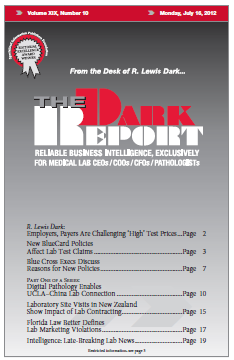CEO SUMMARY: Digital pathology holds the promise of interconnecting pathologists around the globe in ways that advance diagnostic accuracy and improve patient outcomes. One pioneering digital pathology collaboration involves the pathology departments at the medical schools of the University of California, Los Angeles (UCLA) and Zhejiang University in Hangzhou, China. PART ONE OF A SERIES …
Digital Pathology Enables UCLA–China Lab Connection Read More »
To access this post, you must purchase The Dark Report.


